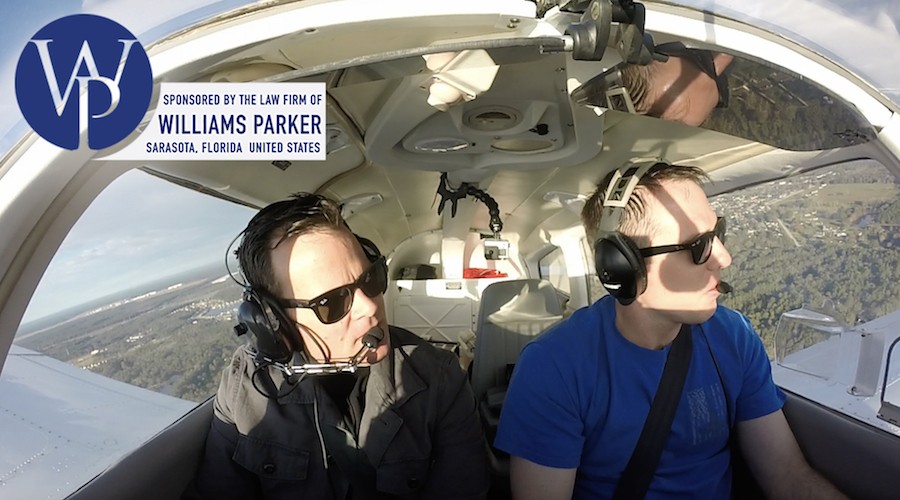From the Cockpit Part 49: Piper Archer
Todays News
SRQ DAILY FRESHLY SQUEEZED CONTENT EVERY MORNING
THURSDAY DEC 7, 2017 |
BY PHILIP LEDERER
Pictured: Ryan Rankin and Chris Reilly fly the Piper Archer. Photo courtesy of Ryan Rankin.
Editor’s Note: This is part 49 of an ongoing series documenting the flights of active-duty US Navy Pilot Ryan Rankin on his journey to fly 52 planes in 52 weeks through the year 2017.
Climbing into the cockpit of a Piper Archer, Rankin isn’t expecting any surprises. A variant of the Piper PA-28 that he flew earlier this year with his friend Lindsay Locke, the Archer generally differs in minor ways—an extra five inches to the fuselage here, a few extra horsepower there—but what Rankin finds is a completely different flying experience. “Especially the way Chris [Reilly] has his configured,” he says.
A fellow Navy pilot, and a detail-oriented, technologically sophisticated one at that, Reilly’s Archer sets the standard for the integrated and overwired cockpit. Whereas as the PA-28, used primarily for flight instruction, presents as something “barebones” and lacking in the creature comforts, Reilly’s Archer is custom-designed for the pilot who wants as much information at his fingertips as possible. Even compared to some military craft, says Rankin, Reilly’s Archer is impressive. Military craft definitely have more sophisticated weapons systems, for sure, but less emphasis on comfort and extra bells and whistles.
Completely gutting the interior and rebuilding the cockpit from the ground up, Reilly’s looks like a full-on control center equipped with all the avionics and digital readouts—“glass,” in aviation parlance—that can fit. In addition to the traditional instruments, the Archer sports a Garmin 696—a combined GPS and large-scale digital map for easy navigation. Punch in airport A and airport B and then just keep the craft along the designated path. “That’s as simple as it gets,” says Rankin. But not content with just the 696, Reilly also installed an additional GPS and ADS-B transponder in the Garmin GTX 345, for a completely separate video readout showing all other air traffic in the area. Without the transponder and GPS, pilots have to rely on communication and guidance from air traffic controllers; with the new equipment, every pilot can be aware of how busy the skies around them really are. “It’s a great tool to have,” says Rankin. “It’s really going to cut down on that mid-air collision risk.” By 2020, the setup will be required in most, if not all, aircraft.
“[Reilly’s] cockpit is an interconnected system,” says Rankin. “There’s this wild network of info going back and forth.” And to top it all off, an iPad attached to the yoke and connected via Bluetooth to the rest of the instruments in his reach. So while the flight itself was pretty straightforward from a mechanical sense, the real lesson was being up-close-and-personal with Reilly’s heavily tech-oriented piloting style.
Given that, it may seem odd that Rankin flew the Archer for roughly five hours—far longer than any other aircraft in the project this year. But that’s because Rankin is up to his usual tricks, seeking out unusual planes—and he thinks he’s found a crown jewel. He’s mum on what it may be, but it’s coming.
For more about the flight in Rankin's own words and a video of the flight, follow the link below.
Pictured: Ryan Rankin and Chris Reilly fly the Piper Archer. Photo courtesy of Ryan Rankin.
« View The Thursday Dec 7, 2017 SRQ Daily Edition
« Back To SRQ Daily Archive









